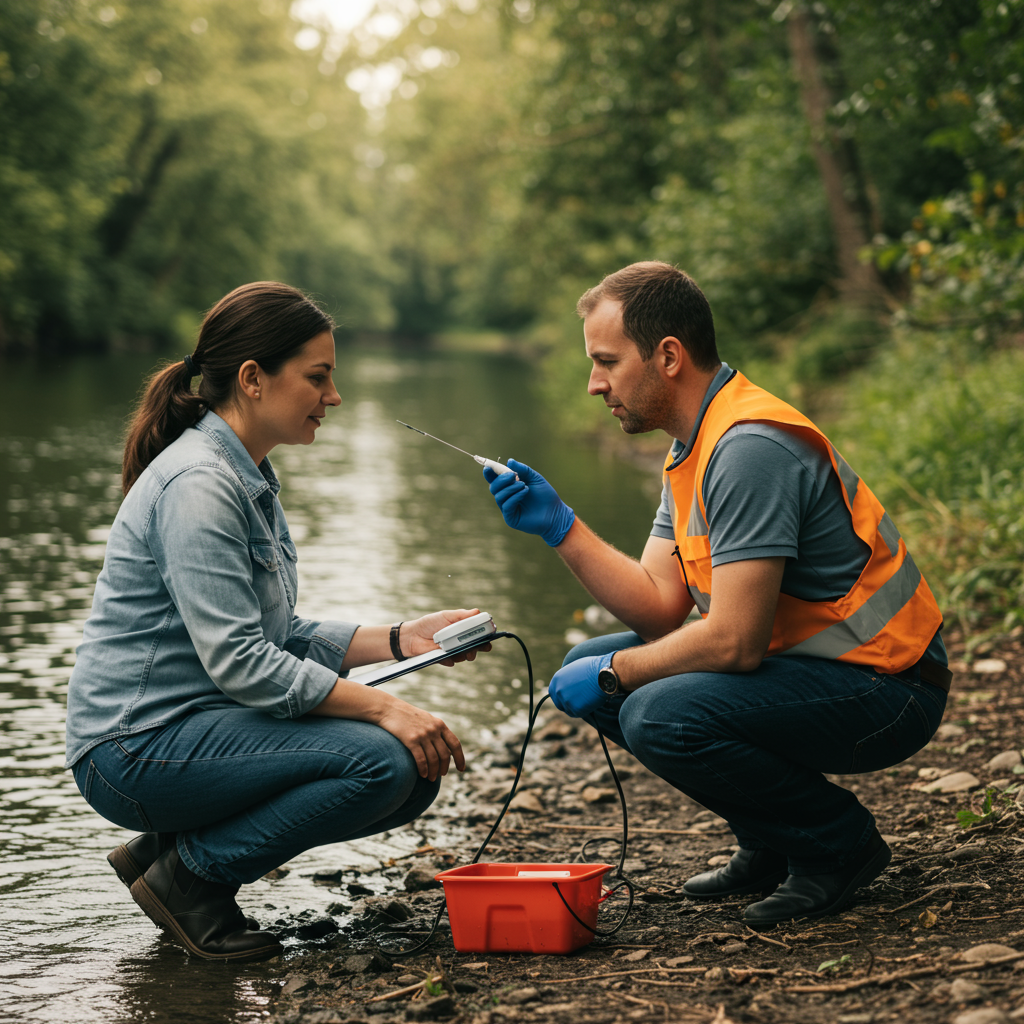
Table of Contents
Introduction
Water pollution is a growing concern that touches every aspect of our lives, from the water we drink to the places we visit for rest and relaxation. Imagine arriving at a stunning lakeside hotel, only to find the waterway murky and lifeless due to pollution. Such scenarios are becoming all too common as contaminants infiltrate rivers, lakes, and oceans worldwide. Whether you’re a frequent traveler or a conscious local resident, the health of our water sources directly affects your well-being and the environment around you.
Understanding the importance of reducing water pollution goes beyond just environmental activism—it’s a crucial step toward securing a healthier future for people and ecosystems alike. Waterborne diseases and harmful chemicals in polluted water sources can threaten human health, causing illnesses and long-term impacts. Ecological damage from polluted waters disrupts aquatic life, harms biodiversity, and weakens the natural balance essential for clean, vibrant habitats. Globally, nearly 80% of wastewater is released untreated into water bodies, amplifying this threat significantly.
Hotels and the travel industry play unique roles in this challenge and solution. By embracing sustainable practices, many accommodation providers are helping reduce pollutants that reach waterways. For travelers and hotel operators alike, choosing or supporting eco friendly hotels means endorsing efforts that limit chemical usage, manage waste responsibly, and conserve water resources. This leads to healthier environments that encourage both tourism and local well-being to thrive harmoniously.
Addressing water pollution requires combined action from individuals, communities, businesses, and governments. Many of the steps and strategies to limit pollution occur right at home or in everyday choices, but larger community efforts and regulations magnify impact further. When everyone understands their part and takes responsible action, cleaner water and healthier ecosystems become attainable goals, fostering a sustainable environment for generations to come.
What You’ll Learn in This Guide
This comprehensive guide dives into the practical and essential information about reducing water pollution. Whether you want to better grasp its causes, recognize its signs, or implement effective prevention methods, you’ll find valuable insights and actionable advice here.
- Understanding Water Pollution: Learn the common causes and types of pollutants that contaminate various water bodies, from chemical runoffs to plastic waste. You’ll understand how these pollutants arise and why they are harmful.
- Recognizing Effects and Signs: Discover how pollution impacts health, wildlife, and ecosystems. We dissect visible and invisible signs of water pollution so you can identify issues early and understand the risks involved.
- Practical Reduction Steps: Gain knowledge of household, community, and industrial actions that can minimize water pollution. This includes proper waste disposal, use of eco-friendly products, and supporting policies encouraging environmental protection.
- Prevention and Proactive Measures: Explore straightforward strategies and lifestyle choices that protect water resources daily. From reducing plastic use to supporting green infrastructure, you’ll find meaningful ways to contribute actively.
Throughout this article, we will explore in detail how individual and collective efforts lead to measurable improvements in water quality. We’ll discuss practical guidelines applicable to your home, neighborhood, and the larger industrial context. Importantly, we’ll illustrate how conscious travel decisions such as choosing sustainable accommodations fit into this global movement for cleaner water.
By understanding the challenges and embracing effective solutions, you empower yourself and your community to create lasting environmental benefits. The steps are feasible, and the benefits extend well beyond water purity—improving health, boosting local economies, and preserving the natural world’s beauty and vitality.
Get ready to dive deep into causes, consequences, and solutions that will inspire informed, proactive actions to reduce water pollution. Whether you’re a concerned citizen, a traveler, or a business stakeholder, this guide provides the knowledge and encouragement you need to be part of the solution. Let’s begin the journey toward a cleaner, healthier environment with practical steps everyone can embrace.

Water pollution is a critical environmental issue that affects ecosystems, human health, and the sustainability of our natural resources. Reducing water pollution requires a comprehensive understanding of its causes, effects, and practical solutions that individuals, communities, and industries can implement. In this discussion, we will explore effective ways to reduce water pollution by analyzing household actions, community and policy measures, and industrial practices. These approaches collectively contribute to safeguarding water quality and promoting a cleaner environment for present and future generations.
Effective Household Actions to Minimize Water Pollution
Households play a pivotal role in influencing water quality through daily behaviors and waste management practices. Small changes at home can significantly reduce the amount of harmful pollutants entering water bodies, making environmentally responsible habits essential. Proper disposal of chemicals and medicines is crucial because these substances, if flushed or poured down drains, can introduce toxic compounds into water systems, harming aquatic life and contaminating drinking water. Using eco-friendly cleaning products substitutes conventional chemicals with biodegradable ingredients, reducing toxic runoff. Additionally, decreasing plastic usage not only cuts down on the physical litter that pollutes waterways but also lowers the chemical contamination associated with plastic breakdown.
Engaging in responsible household water pollution prevention promotes healthier ecosystems and reduces long-term costs associated with water treatment and environmental restoration. For a more detailed understanding of environmental sustainability principles, exploring concepts like eco-friendly practices can provide valuable insights into integrating sustainable habits into daily life and hospitality operations, demonstrating broader community impacts.
Key Aspects of Household Water Pollution Prevention
Understanding the specific actions households can take helps empower individuals to contribute actively to water quality preservation. Below are vital points to consider:
- Proper Chemical Disposal: Avoid pouring leftover paints, medications, or solvents down sinks or toilets. Instead, utilize local hazardous waste collection programs to safely dispose of these substances, preventing harmful water contamination.
- Eco-Friendly Cleaning Products: Choosing biodegradable detergents and natural cleaners reduces the toxic burden on wastewater treatment and aquatic ecosystems. These alternatives break down more easily and are less likely to harm beneficial microorganisms.
- Reducing Plastic Use: Limiting single-use plastics and opting for reusable or biodegradable materials diminishes plastic debris in water bodies. This practice reduces physical pollution and the harmful chemical leachates that plastics can release.
- Water Conservation: Using water-efficient appliances and reducing unnecessary water use helps decrease runoff volume and pollutant loads entering water bodies. Conservation also eases strain on local wastewater treatment systems.
Community and Industrial Strategies for Water Pollution Control
Community initiatives and industrial regulations are essential components of large-scale water pollution reduction efforts. Enforcing stricter waste management policies ensures that pollutants are controlled at their source, preventing improper dumping and encouraging recycling and safe disposal. Promoting modern water treatment facilities equipped with green infrastructure elements, such as constructed wetlands and permeable pavements, helps filter contaminants naturally and manage stormwater sustainably. Public awareness campaigns raise knowledge about water conservation and pollution prevention, fostering community stewardship and behavioral changes that contribute to cleaner water resources.
Industries, often significant contributors to water pollution, must adopt sustainable manufacturing processes that minimize waste and reduce hazardous discharges. Employing advanced water recycling and treatment technologies allows businesses to reuse water within their operations, substantially lowering their water consumption and pollutant output. Regulatory frameworks targeting industrial wastewater discharge mandate compliance with environmental standards, ensuring industries are accountable and incentivized to implement cleaner technologies. These multifaceted strategies collectively enhance water resource protection and support ecosystem health.
Important Considerations for Community and Industrial Water Pollution Reduction
Addressing water pollution at the community and industrial levels involves complex measures that require cooperation, investment, and innovation. Key considerations include:
- Waste Management Policies: Enforcing laws and regulations that control landfill operations, sewage treatment, and hazardous waste disposal is fundamental. Effective policies prevent illegal dumping and encourage responsible waste handling among residents and businesses.
- Water Treatment and Green Infrastructure: Investing in state-of-the-art water treatment plants and integrating natural filtration systems improve pollutant removal. Green infrastructure enhances groundwater recharge and reduces urban runoff pollution.
- Public Awareness and Education: Campaigns that inform citizens about the impacts of water pollution and ways to conserve water cultivate community participation. Education empowers individuals to adopt sustainable lifestyles and support environmental initiatives.
- Industrial Water Recycling and Sustainable Processes: Industries that implement closed-loop water systems and eco-friendly manufacturing practices reduce wastewater discharge volumes and pollutant concentrations, safeguarding surrounding water bodies.

Conclusion
Water pollution poses severe threats to both human health and the well-being of natural ecosystems, especially in places where hospitality and tourism flourish. This guide has detailed the various types of water pollutants—chemical contaminants, biological agents, and physical debris—that collectively degrade water quality in rivers, lakes, and oceans. Recognizing the sources and effects of pollution is pivotal to fostering awareness and motivation for change. Households can play a fundamental role by adopting eco-friendly products, properly disposing of hazardous waste, and significantly reducing plastic use. On a broader scale, community engagement and government-enforced policies, such as improved waste management and the promotion of water treatment facilities, are essential to curtail contamination risks and preserve aquatic habitats.
The hospitality industry, particularly hotels, can greatly influence water pollution trends through sustainable practices. Choosing to support eco friendly hotels encourages establishments to manage water resources conscientiously and minimize pollutant discharge. Practically, industries can adopt advanced wastewater treatment technologies, enforce stricter discharge regulations, and innovate sustainable manufacturing methods to reduce their environmental footprint. Together, these concerted efforts contribute to restoring and maintaining clean, vibrant waterways that support biodiversity and ensure safe water for communities and travelers alike.
Actionable steps to reduce water pollution begin right at home. Individuals can start by using environmentally safe cleaning products, ensuring proper disposal of medicines and chemicals, and reducing reliance on single-use plastics. On a community level, advocating for and supporting policies that enhance waste management infrastructure and encourage green urban planning can dramatically reduce pollutants entering water systems. Industries need to continue adopting water recycling and treatment technologies and comply with regulations to mitigate harmful discharges. Travelers and local residents who prioritize sustainable accommodations help fuel a demand for responsible environmental stewardship.
To protect water resources effectively, it’s crucial to maintain everyday prevention habits such as avoiding littering near water bodies, reducing fertilizer use in gardens, and properly maintaining septic systems. Awareness of pollution signs and understanding when to seek expert help can prevent further damage and facilitate timely interventions. If pollution indicators like foul odors, discoloration, or dead aquatic life appear, contacting environmental professionals or government agencies is advised to address severe contamination.
We encourage everyone—households, communities, businesses, and governments—to embrace their responsibility in reducing water pollution. Through conscious choices and combined efforts, we can safeguard water quality, protect public health, and preserve the delicate balance of ecosystems vital to life. Supporting and choosing eco friendly hotels not only promotes sustainable travel but also sets a positive example for industries to follow. Together, our proactive actions pave the way for a cleaner environment, benefiting present and future generations.
Frequently Asked Questions
-
What are the main sources of water pollution?
- Water pollution mainly originates from industrial discharge, agricultural runoff including fertilizers and pesticides, sewage, and plastic waste contaminating aquatic environments.
-
How can households contribute to reducing water pollution?
- Households can reduce water pollution by properly disposing of chemicals and medicines, using eco-friendly cleaning products, reducing plastic usage, and conserving water.
-
Are there laws to control water pollution?
- Yes, many countries enforce regulations to limit pollutant discharge into water bodies, protect water quality, and penalize violations to ensure environmental safety.
-
Can water pollution affect human health?
- Yes, polluted water can cause diseases such as gastrointestinal infections, neurological disorders, and long-term health effects due to toxic chemical exposure.
-
What role do industries play in reducing water pollution?
- Industries can reduce pollution by adopting cleaner production techniques, treating wastewater before discharge, and using water recycling technologies to minimize environmental impact.
